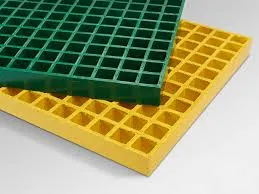loading...
- No. 9, Xingyuan South Street, Dongwaihuan Road, Zaoqiang County, Hengshui, Hebei, China
- admin@zjcomposites.com
- +86 15097380338
- Welcome to visit our website!
Understanding the Benefits and Challenges of Reverse Osmosis Water Filtration Systems
Understanding Reverse Osmosis Systems
Reverse osmosis (RO) is a widely used water purification technology that plays a critical role in providing clean and safe drinking water. This process utilizes a semi-permeable membrane to remove contaminants and impurities from water, ensuring the end product is free of harmful substances. In this article, we will delve into the workings of reverse osmosis systems, their benefits, applications, and some considerations to keep in mind.
How Reverse Osmosis Works
At its core, reverse osmosis is a physical separation process. In a typical RO system, water is forced through a semi-permeable membrane that allows only water molecules to pass while blocking larger molecules and dissolved solids, such as salts, bacteria, and other impurities. This is achieved by applying pressure to the water, which drives it through the membrane.
The process starts with feed water, which may contain various contaminants. This feed water enters the RO unit and is subjected to high pressure. As the water flows through the membrane, impurities are left behind and flushed away, typically through a drain. The clean water that passes through the membrane then undergoes additional filtration stages, often including activated carbon filters to remove any remaining chlorine or odor before it is stored in a holding tank.
Benefits of Reverse Osmosis Systems
1. High Purification Efficiency One of the primary advantages of reverse osmosis is its ability to remove up to 99% of contaminants, including heavy metals, salts, and microorganisms. This efficiency ensures that the water is not only safe for consumption but also tastes better.
2. Improved Taste and Odor By effectively removing chlorine, sediment, and other impurities, RO systems significantly enhance the taste and odor of drinking water. This makes it more palatable, encouraging better hydration habits.
3. Cost-Effective While the initial investment in an RO system may be higher than other filtration methods, the long-term savings can be substantial. By producing purified water in-house, users can reduce their reliance on bottled water, leading to lower costs and reduced plastic waste.
4. Versatility Reverse osmosis systems are versatile and can be used in various settings, from residential homes to large industrial facilities. They can treat different types of water sources, including tap water, well water, and seawater, making them suitable for diverse applications.
reverse osmosis system

5. Minimal Maintenance Most RO systems require minimal maintenance, with routine filter changes and occasional membrane replacements. This ease of maintenance makes them user-friendly, even for those with limited technical knowledge.
Applications of Reverse Osmosis
Reverse osmosis systems are utilized across numerous fields due to their effectiveness. In residential settings, many households install under-sink RO units for drinking and cooking water. In commercial environments, they are used in food and beverage production, pharmaceuticals, and laboratories where high-purity water is essential.
Industrially, RO is crucial in processes such as desalination, where saltwater is converted into fresh water, and in the manufacturing of electronics where ultra-pure water is necessary. Additionally, many aquariums rely on reverse osmosis to create optimal water conditions for aquatic life.
Considerations and Challenges
Despite their many benefits, reverse osmosis systems do have some drawbacks and considerations. The process generates wastewater, and the volume of this waste can vary depending on the system's efficiency. Additionally, while RO removes many contaminants, some smaller molecules and certain chemical pollutants may pass through the membrane, necessitating additional treatment methods like activated carbon filters.
Furthermore, the quality and performance of an RO system can be influenced by factors such as feed water pressure and temperature, which can vary in different locations.
Conclusion
Reverse osmosis systems are an effective solution for achieving clean and safe drinking water. Their ability to remove a wide range of contaminants, coupled with their versatility and ease of maintenance, makes them increasingly popular in residential and commercial applications alike. By understanding how these systems work and weighing their benefits against potential challenges, consumers can make informed decisions about the best water purification solutions for their needs. As the demand for clean water continues to grow, reverse osmosis will undoubtedly play a vital role in ensuring access to this essential resource.
-
The Rise of FRP Profiles: Strong, Lightweight, and Built to LastNewsJul.14,2025
-
SMC Panel Tanks: A Modern Water Storage Solution for All EnvironmentsNewsJul.14,2025
-
GRP Grating: A Modern Solution for Safe and Durable Access SystemsNewsJul.14,2025
-
Galvanized Steel Water Tanks: Durable, Reliable, and Ready for UseNewsJul.14,2025
-
FRP Mini Mesh Grating: The Safer, Smarter Flooring SolutionNewsJul.14,2025
-
Exploring FRP Vessels: Durable Solutions for Modern Fluid HandlingNewsJul.14,2025
-
GRP Structures: The Future of Lightweight, High-Performance EngineeringNewsJun.20,2025
